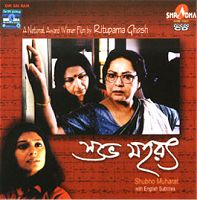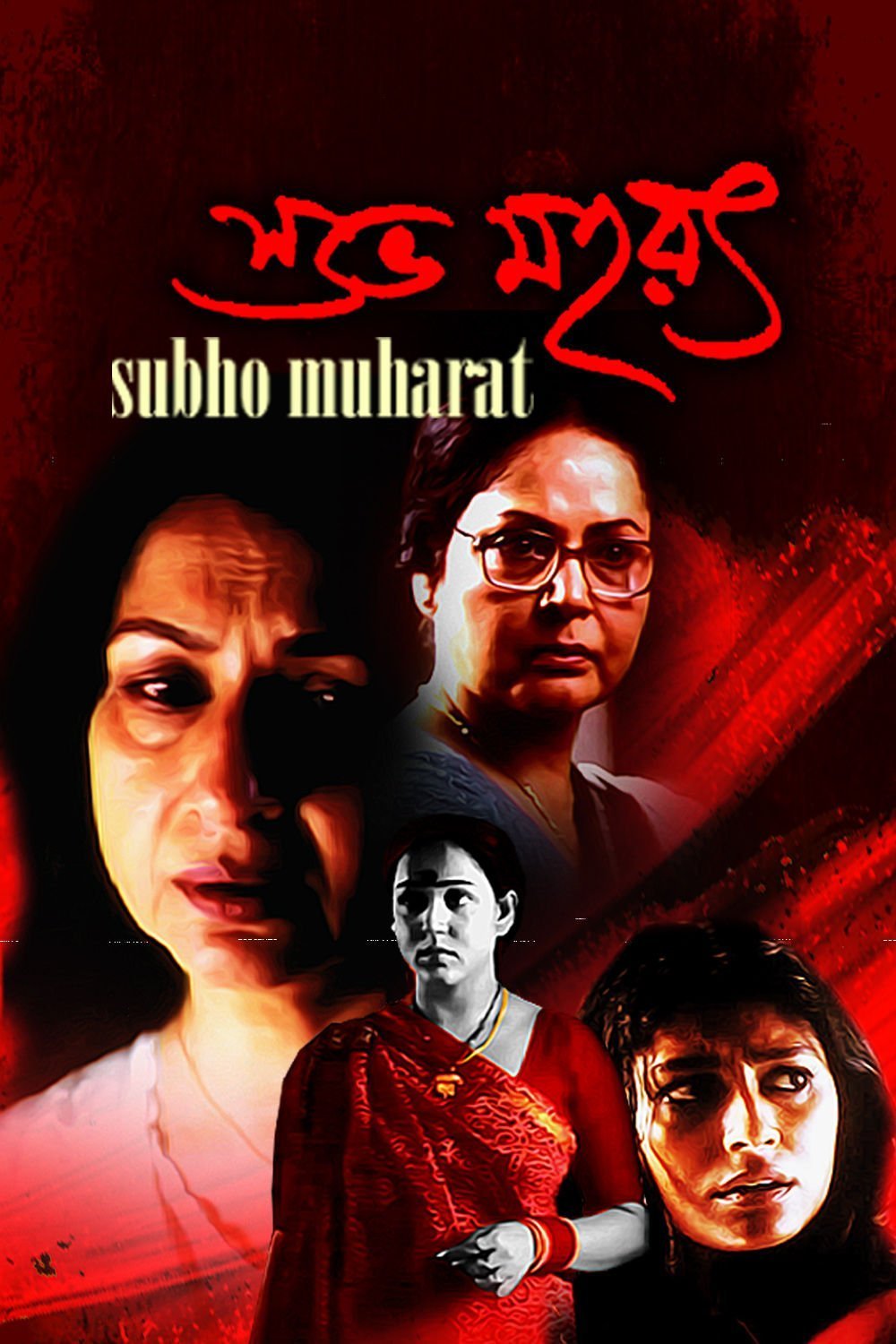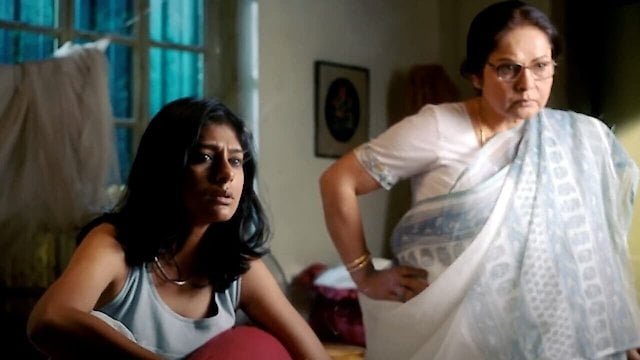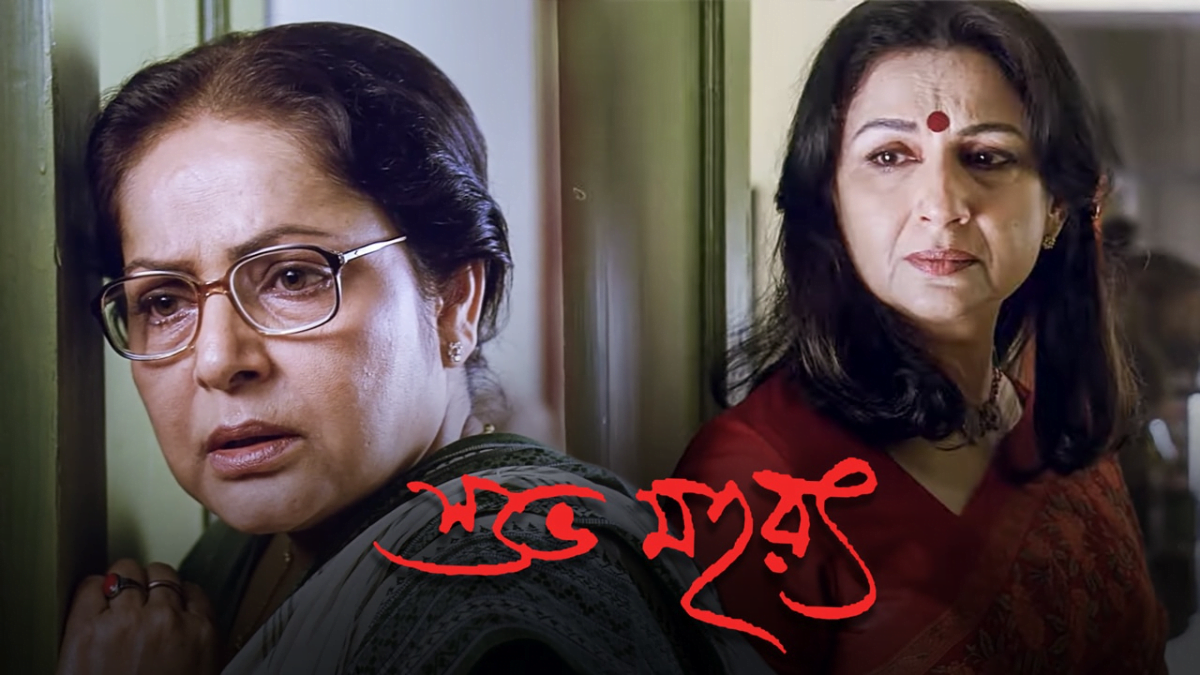20 years ago, Rituparno Ghosh delivered on screen a mystery-thriller- one that is often forgotten under the weight of their grander and more acclaimed cinematic achievements. Rituparno had always nurtured the quest to produce films that would preach important lessons on gender, its fluidity and how love negotiates these boundaries; without really preaching. These concepts were explored, always in the domestic spaces and that made Rituparno Ghosh stand out as a director of grounded vision.

Shubho Mahurat (2003) is an adaptation of Agatha Christie’s The Mirror Crack’d from Side to Side. The film plays with perspectives and its cliff hangers are not grand actions but simply different ways of looking. Shubho Mahurat begins with an NRI Bengali actress, Padmini Chaudhary, who returns to India after spending a long time in America to produce a film directed by her second husband Sambit Ray and starred by her friend, Kakoli, who had not appeared in cinema for a long time due to her drug addiction.
Shubho Mahurat (2003) is an adaptation of Agatha Christie’s The Mirror Crack’d from Side to Side .
On the first day of shoot, Kakoli is poisoned and she dies while giving an interview to Mallika, a journalist who was new to the industry and the city and was staying with her aunt. The death of Kakoli is followed by the mysterious death of her makeup artist, Kalpana. As the film progresses, three characters try to unveil the mystery behind Kakoli’s death: the police inspector, Mallika and her aunt.
How is Shubho Mahurat feminist?
The film is a serious meditation on many facets of feminism that Indian women have been struggling with. Its greatest attempt lies in its modification of the genre of mysteries. Bengali cinema industry has given some of the most lovable mystery films. Yet in almost all of them, it is the men who are saviour-like figures, extremely witty, mostly good-looking and undeniably intelligent. They are revealer of truths; their omnipresent characteristics win over the audience. Rituparno takes the most assumed plotline of any mystery film, and turns it on its head by making a woman uncover the truth. Men in Shubho Mahurat are almost secondary in terms of their contribution to unravelling the truth.
In one way, Rituparno pulls a Barbie on the Bengali audience. They allocate the men in Shubho Mahurat a space that is within the female gaze. It is the women running the plot, while the men are mostly love interests. More interestingly, the woman who gets to the end of the mystery, does so not through the male-dominated public sphere of media or police, but through the private space that women have run through ages in Bengali families: the household. It is in the most nostalgic favourite-aunt-of-mine house (we all have that one aunt who is too cool and her house that is too comfortable) where the mystery is unravelled. And by doing that, Ghosh subverts the very genre that they film.
How does love play out in Shubho Mahurat?
A Rituparna Ghosh film that is absent of love is unimaginable. Through Mallika, we explore young love that is fresh, but also urgent. Mallika needs to select a lover before her parents do the same for her. Mallika bounds herself to monogamous approaches to love; setting for one lover only to later realise towards the end of Shubho Muharat; paralleling the climatic scene, that one may love two people, and that does not make the love any less real.

Ghosh sketches the duality of human love and thereby human character by portraying a character that suits the archetype of the modern Indian woman; one who is aspiring, career-oriented, beautiful and funny but gives her a much-forbidden characteristic: desire. Mallika desires love in all its forms. She fights her urges against the traditional notions of one love, one soul. In fact, Ghosh is constantly presenting dualities in Shubho Muharat: every character fights the concept of being one individual, multitudes exist within one body.
Of course, their greatest exploration of love is through the character of Padmini. Padmini, throughout the film, is the distant upper class NRI retro actress, whose glamour might have faded in the industry, but her grace is everlasting. She is a kind-hearted woman. She gave Kakoli a role despite her drug-addiction. She seems to be a woman who has had a lot of love and privilege in her life and thus, is capable of helping and loving others affectionately; but there is also a sense of falseness in the grace: it is too perfect to be true. Padmini’s love is the strongest love there is in Shubho Muharat, but it the least talked about in the plot.
In one way, Rituparno pulls a Barbie on the Bengali audience. They allocate the men in Shubho Mahurat a space that is within the female gaze.
It is at the end that we know that her love transgressed the boundaries of morality and honour. In Padmini we find the unspeakable love that has been classicaly preserved. In Padmini we find the words of Tony Morrison: ‘Love is or it ain’t. Thin love ain’t love at all.’ Padmini’s love is a force of passion and anger intertwined. It is taking those forces of universe into hands that she is not allowed to and exploiting those forces to seek justice for a love that was buried in past by all those who claimed to love her. Her actions are condemnable, but her love was greater. In the end, when she eats the sweets she wasn’t supposed to eat, she realises the extent to which she was blinded by her love: her love is subdued like smog after rain, when Ranga Pishi says that nothing would bring back the one who is gone. Padmini is remembered in the film for a love that is dark, blind and unhealthy; but one that also cannot succumb to the previously mentioned labels.
The class factor in Shubho Mahurat
Class plays in the subplot of Shubho Mahurat like a crawling snake whose poison evaporates itself into the lives of the people. Class is silent in the film yet without class, Shubho Mahurat is incomplete. Kalpana embodies a smart independent woman, whose empowered self is curbed under the pressures of her class in an industry that essentially is run by the rich. Kalpana is a confident, well trained make-up artist who had an affair with the cameraman, Sunil. Kalpana was in desperate need of money and she blackmailed Sunil by threatening to tell his wife about their affair and thereby extracting money from him for her child’s treatment in the hospital.

Kalpana, too, reflects the duality of character. She is not a helpless victim, but an active player in the plot who is neither afraid of her desires nor oblivious about her conditions. It is interesting how the lower-class character of Kalpana suffers the most; she never lives to see her child recover and is tricked by those she loves. In the altar of justice, the poor is sacrificed, as usual.
Shubho Mahurat is interesting through many lenses: it talks about empowerment, class, loneliness, love, revenge and womanhood. The twenty year old film is a reminder for where we should be headed with male dominated genres of mysteries and thrillers. But it is also a film that makes one rethink love, passion, loneliness and the life in it all.





